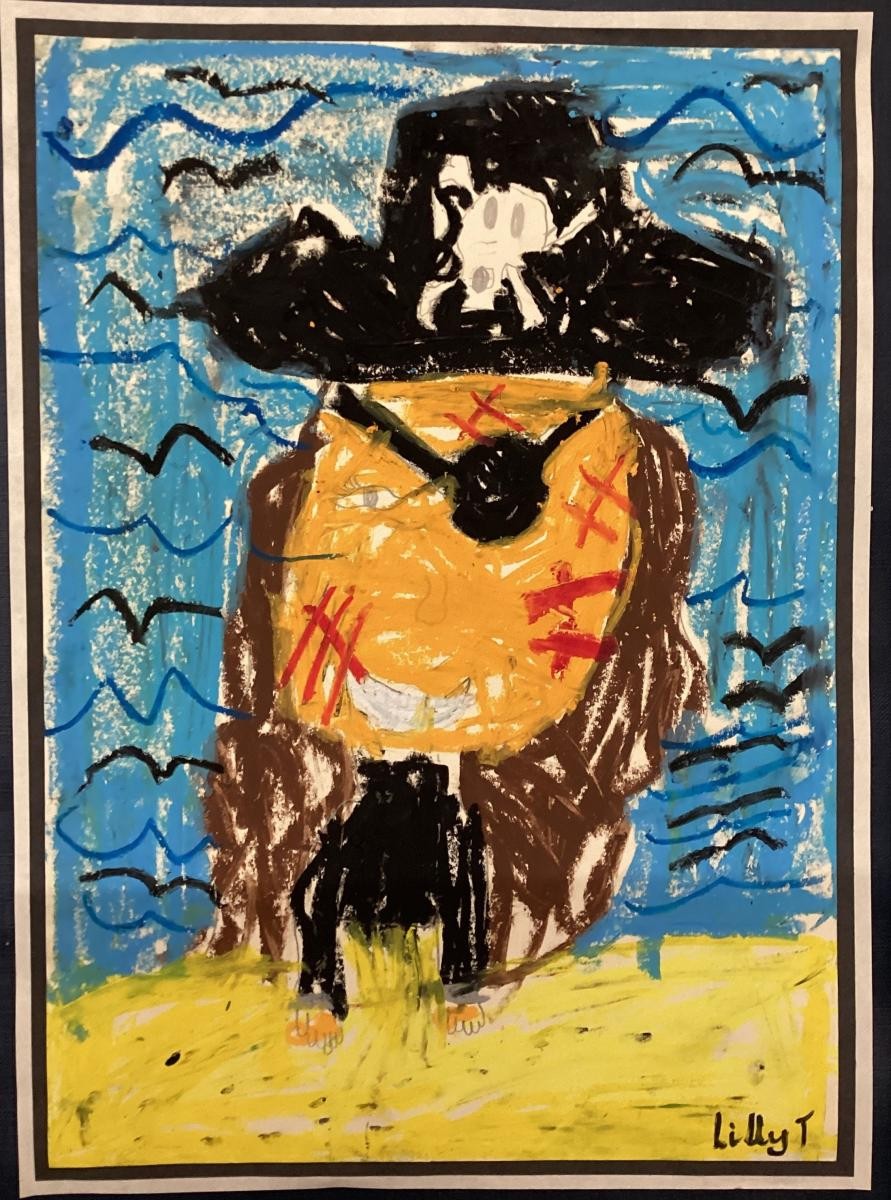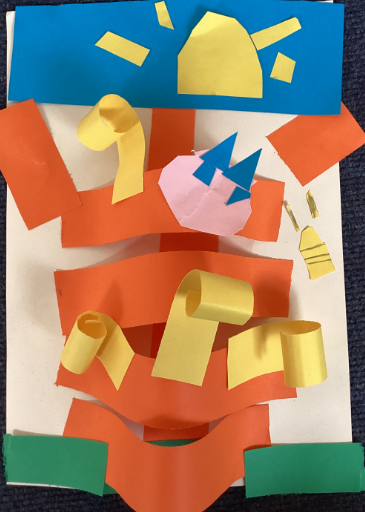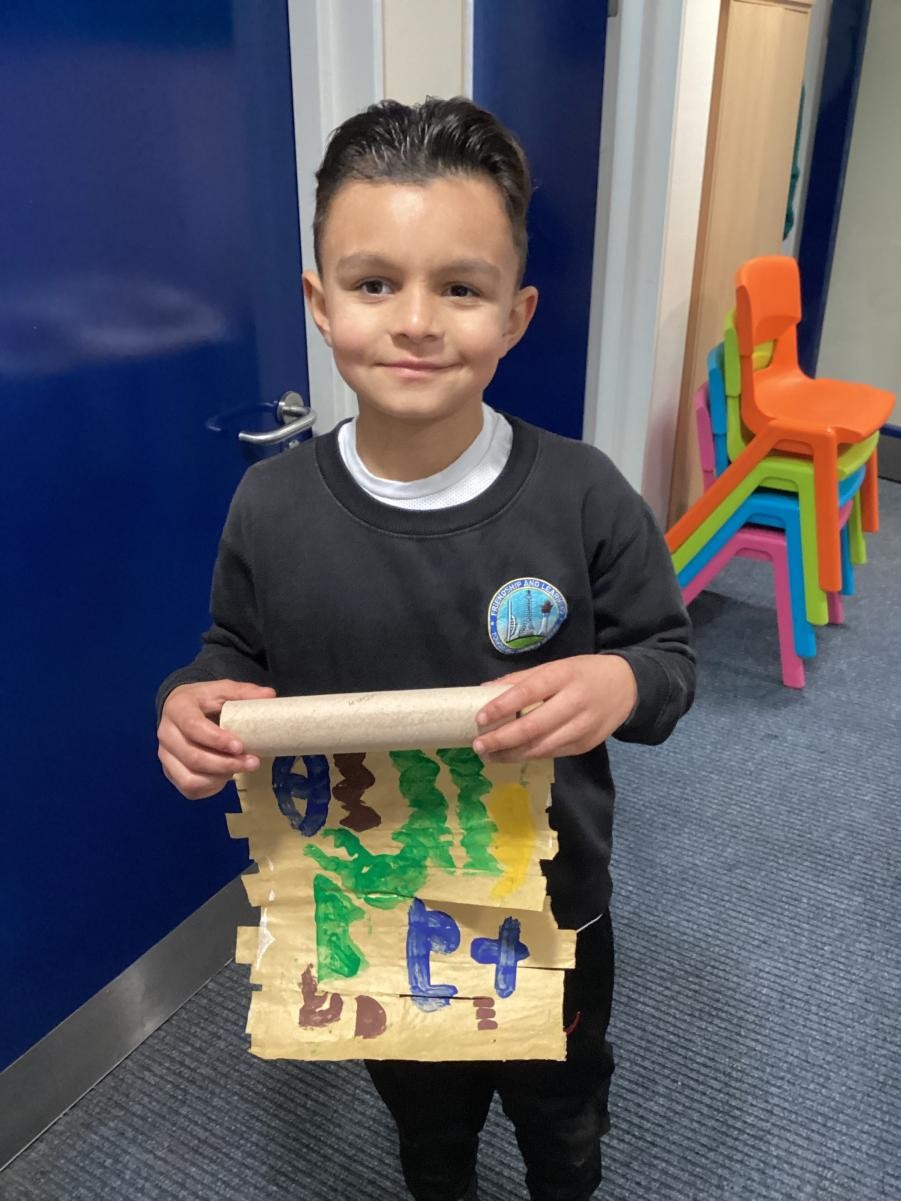Art Rationale
Intent:
At Tower Hill Primary School our core vision is that ALL children will be equipped with the skills, knowledge, understanding and empathy that will lead to them being able to make their own choices in life, successfully. The intent of our Art curriculum is to engage, inspire and challenge pupils as well as create a desire to experiment, invent and create their own works of art, craft and design. We strive to give all children a wealth of experiences in Art to enable their confidence to grow with experimenting as well as develop their own creativity and imagination to invent their own works of art. We believe first-hand experiences and giving the children opportunities to communicate their own ideas and feelings through a range of materials and tools is the best way to deliver a high quality Art and Design curriculum.
We believe it is essential that children know and understand how Art and Design both reflect and shape our history and contribute to the culture and creativity of our nation. Exploring famous artists, craftspeople and designers ensures children can develop their own opinions of artwork thinking critically and imaginatively, forming their own responses of art from different times and cultures. This enables our children to develop a positive approach towards people of all race, gender and ability.
The teaching of Art encourages children to develop their fine motor control, observational skills and their appreciation of the use of colour, pattern, texture, line, shape, space and form. It also gives children the opportunity to work in all sorts of ways, such as; whole class, small groups, pairs and as individuals developing that sense of team and self. Thinking critically is an important element of our Art curriculum at Tower Hill which is developed and reinforced through the use of the ‘Butterfly Effect’. This approach to lessons teaches children how to form opinions and assess their own and others work in a positive way, strengthening relationships. We strive for all to be actively engaged in their own learning, to be motivated and eager, to achieve and attain to their own full potential in Art.
Implementation:
Tower Hill’s Art Curriculum is coherently planned and sequenced for ALL learners to progress. It is influenced by schemes of work from Kapow Primary, complimenting the curriculum overview we have here at Tower Hill. This ensures the learning is purposeful and relevant as well as developing the key skills and knowledge needed to allow our children to leave Tower Hill with a full and rich understanding of Art, preparing them for their secondary curriculum.
Our Art curriculum has 5 key strands that run throughout which have been identified from the National Curriculum aims:
- Generating Ideas
- Using Sketchbooks
- Making skills (including the formal elements)
- Knowledge of artists
- Evaluating and Analysing
These five strands allow our children to build practical, theoretical and disciplinary knowledge and enable them to generate ideas and use their sketchbooks to develop their own artistic identity. This is a holistic scheme of work with each unit working towards all of the end of Key Stage attainment targets. The units are sequential with key skills revisited again and again with increasing complexity allowing the children to revise and build on their previous learning.
Each year group has three distinct units of study that have meaningful links with other subjects to make the learning purposeful and relevant to the children. The children’s artwork is valued highly and is a focal point for many displays around the school, complimenting writing in other areas of learning. Creativity and independent outcomes are embedded throughout the curriculum to support children to make their own creative choices and decisions so their outcomes are knowledge rich as well as being unique to the children.
Sketchbooks
Art lessons are always practical and encourage experimental and exploratory learning, therefore sketchbooks are integral to the high-quality delivery of our Art curriculum. Every child from Year 1 to Year 6 is given their own sketchbook to record their art journey. Having their own sketchbook allows our children to develop their ability to be individual and creative artists. At Tower Hill we view sketchbooks differently to other exercise books we have in school and therefore teachers do not mark or provide written feedback on the children’s work or presentation. Any comments made by adults are either verbal during lessons or written on post-it notes to ensure the children do not feel their work is undervalued or altered and influenced by adults. The children are encouraged to talk to each other about their work and offer constructive feedback. We also see the whole book as a learning journey rather than individual, dated pieces.
Early Years Foundation Stage:
In the early years art is taught through the specific area of ‘Expressive Arts and Design’. It states that,
‘The development of children’s artistic and cultural awareness supports their imagination and creativity. It is important that children have regular opportunities to engage with the arts, enabling them to explore and play with a wide range of media and materials. The quality and variety of what children see, hear and participate in is crucial for developing their understanding, self-expression, vocabulary and ability to communicate through the arts. The frequency, repetition and depth of their experiences are fundamental to their progress in interpreting and appreciating what they hear, respond to and observe.’
At Tower Hill we believe that helping children to be creative is as much about encouraging attitudes of curiosity and questioning as about skills or techniques. This is facilitated by the children having access to a designated art area during their child-initiated play stocked with a range of materials for children to freely choose and manipulate in their own individual way. Encouraging children to choose and use materials and resources in an open-ended way helps them to make choices and to have confidence in their own ideas. Children notice everything and closely observe the most ordinary things that adults often take for granted. Building on children’s interests can lead to them creating amazing inventions or making marks on paper that represent for them an experience or something they have seen. In addition to the children’s freely chosen art outcomes, the early years art curriculum at Tower Hill also includes six discretely taught units which are also influenced by the Kapow scheme of work. These units still ensure a child-led approach with the focus being on process rather than outcome. The children are given the encouragement to explore a range of media and grow in confidence as artists and makers. The units mirror the four key areas identified in the KS1&2 part of the Tower Hill curriculum; Drawing, Painting and mixed media, Sculpture and 3D and Craft and design. Each unit provides the children with opportunities to learn new skills, practise their fine motor skills and develop their vocabulary.
Key Stage I:
The National Curriculum states that in KSI:
Pupils should be taught:
- To use a range of materials creatively to design and make products
- To use drawing, painting and sculpture to develop and share their ideas, experiences and imagination
- To develop a wide range of art and design techniques in using colour, pattern, texture, line, shape, form and space
- About the work of a range of artists, craft makers and designers, describing the differences and similarities between different practices and disciplines, and making links to their own work.
In KS1 children develop their knowledge and skills across these key areas; Drawing, Painting and mixed media, Sculpture and 3D and Craft and Design. Within their units, children build on their early experiences in the EYFS introducing new techniques with a focus on encouraging children’s creativity and artistic ideas and enabling them to begin to reflect on their own artwork whilst being exposed to a range of artists. KS1 children begin to talk about their own artwork and form opinions by asking the questions, ‘What is it like?’ ‘What do I think about it?’
In Year 1 children begin the year by focusing on painting and mixed media in their unit ‘Colour splash’, building on their exploration with paint in EYFS to develop their knowledge of the primary and secondary colours and using a range of tools to paint on different surfaces. Although there is not a unit in Year 2 dedicated to painting and mixed media, this skill is embedded cross-curricular in their history unit ‘Fire Fire’.
Year 1’s drawing unit ‘Make your Mark’ builds on from the EYFS unit ‘Marvellous Marks’ by further developing the children’s exploration with mark making and introducing them to the formal element of ‘line’ to develop their observational drawing skills. Year 2’s drawing unit ‘Tell a story’ builds on the children’s prior mark making, introduces creating texture and as a cross curricular link to their writing topic, enables the children to become illustrators for their own stories.
In Sculpture and 3D, Year 1 children use paper to create 3D structures of their drawings working towards creating a collaborative sculpture to compliment their text driver in Literacy. In Year 2 children develop their ability to sculpt from their own drawings to shape and mould clay to create their own clay tile house to support their History topic ‘Great Fie of London’.
In Year 2 children end the year by focusing on craft and design in their unit ‘Map it out’, building on their cutting, arranging and joining skills when given a simple design brief. The children use a range of stimuli, exploring different media and techniques to generate their ideas.
Key Stage II:
The National Curriculum states that in KSII:
Pupils should be taught to develop their techniques, including their control and their use of materials, with creativity, experimentation and an increasing awareness of different kinds of art, craft and design. Pupils should be taught:
- To create sketch books to record their observations and use them to review and revisit ideas
- To improve their mastery of art and design techniques, including drawing, painting and sculpture with a range of materials [for example, pencil, charcoal, paint, clay]
- About great artists, architects and designers in history
The teaching of Art at Tower Hill in KSII builds on the ideal of KSI with encouraging children’s creativity and imagination, complimenting other areas of the National Curriculum.
Each year group across KS2 has a discrete drawing unit. In Year 3, the children continue to build on their KS1 knowledge looking at how to create texture in drawings as well as being introduced to two new formal elements of tone and shape. The children then apply their learning to an observational drawing of botanical plants to compliment their Science learning. In Year 4 the children develop their knowledge of using tone in their drawings to create a 3D effect and are introduced to proportion and shading to create pattern and contrast. The children are also introduced to a different method of ‘drawing’ through a mixed media composition and end their unit with turning their drawings into a print. In Year 5 children then use their drawing knowledge and skills from previous years and are given the opportunity to develop their independence and decision-making using open-ended and experimental processes; combining drawing and collagraph printmaking to create a futuristic image to enhance their Space topic. Year 6 children then end their drawing journey by thinking about how artists use drawings to convey a message looking specifically at street art; exploring imagery, symbols, expressive mark making, and ‘chiaroscuro’ to consider audience and impact to create powerful drawings to make their voices heard.
Painting and mixed media discrete units are taught in years 4, 5 & 6. Although Year 3 do not have a unit dedicated to painting and mixed media, there is painting woven into their craft and design unit as well as the children using painting to enhance their Spring history topic where they look at early pre-historic cave art. Year 4 extend their KS1 understanding of colour by exploring how to create tints and shades and how to use these to create effect in their paintings. To link and build upon their learning in their drawing unit, year 4 use their understanding of proportion and composition and apply their painting skills to create a still-life piece. Year 5 build upon their year 4 experience of turning their drawings into other art, this time using paint as the medium. They look at combining different materials for effect and work towards creating unique self-portraits using mixed media. Finally, in Year 6 to compliment their drawing unit, the children look at a range of famous artists, thinking about the meanings/messages/stories portrayed by their artwork, analysing and responding to form their own interpretations. The children end the unit by creating their own personal response to their research about the artist ‘Henry Moore’ which links to their History learning.
In Years 3&4, Craft and Design units are used to compliment the children’s history and science topics. Year 3 look closely at the Ancient Egyptian style of art, thinking about the symbols, colours and patterns used. The children work towards creating their own zine to share what they have learnt about the Ancient Egyptian art. Year 4 children use their unit to link with their Science learning about the biomes, looking closely at rainforest art. Children develop drawings through experimentation and textile-based techniques to design a repeating pattern suitable for fabric. Year 6’s unit gives the children opportunity to create art using a different medium entirely and lets them begin to think about technology in art by developing photography skills and techniques to design a range of creative photographic outcomes.
Sculpture and 3D in Year 3 builds on their knowledge of art in 3D from KS1. The children move on from basic shaping and joining to develop an understanding of more purposeful shaping and new ways to join and also begin to think about how shapes can create abstract 3d art. Year 5’s Sculpture and 3D unit introduces the children to ‘installation art’ looking at the space and scale of art and how this can change the effect as well as introducing the children to the idea of how other people experience their art and that art can be interactive. The unit gives the children the opportunity to create their own installation art to portray a message to the ‘viewer’.
Impact:
We believe it is vital for our children to leave Tower Hill equipped with a range of techniques and the confidence and creativity to form a strong foundation for their Art and Design learning at KS3 and beyond. Enabling children to take part in regular discussions and decision making, children will not only know key facts and information but will talk confidently about their own learning journey and a growing understanding of how to improve. This is supported by the learning journeys shared with the children during each unit and stuck in sketchbooks at the end of each unit. To support teacher’s assessment of children’s progress each lesson has guidance to support assessment against the progression framework and learning objectives. Throughout units of art children are given the opportunity to critique and reflect on their own and other’s work, teachers use the children’s evaluations, final pieces, sketchbooks and assessment tasks to assess the children’s progress.
Golden Thread:
In our Art lessons at Tower Hill, it is imperative that we continue to build and develop children’s aspirations for life. We aim to achieve this through introducing all children to careers, each one being linked to their unit of study. This will provide children with the knowledge of careers that they may not have come across in their lives so far. To improve aspirations further, we will endeavour to seek out opportunities for children to experience what a career in Art might look like through external visits and visitors to the school.

































